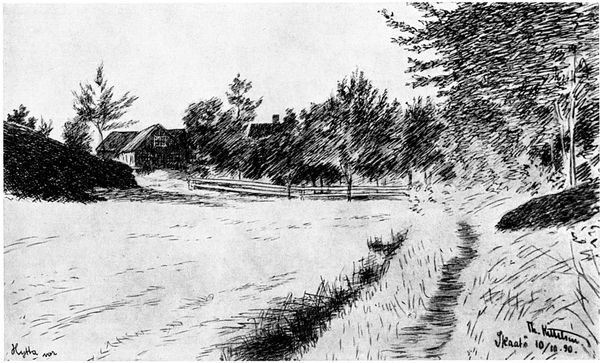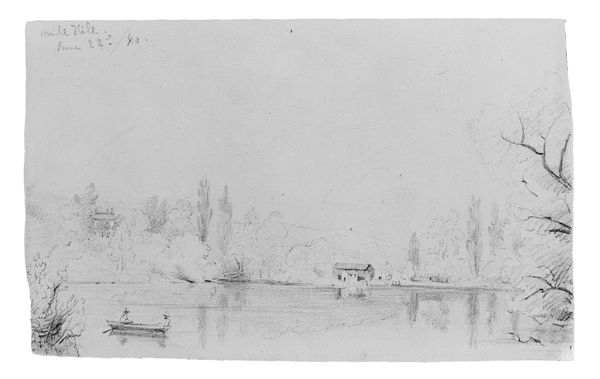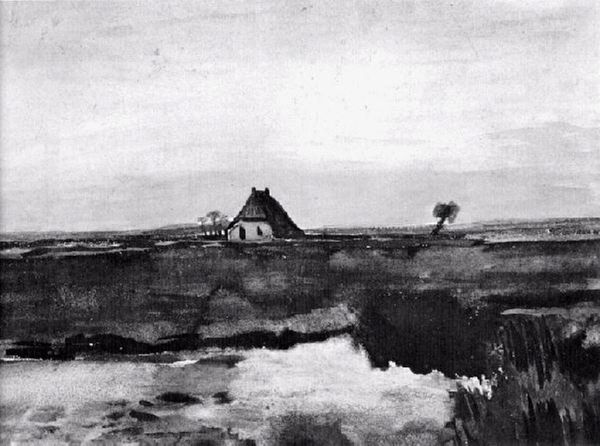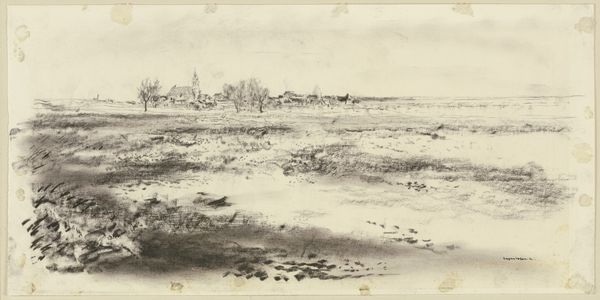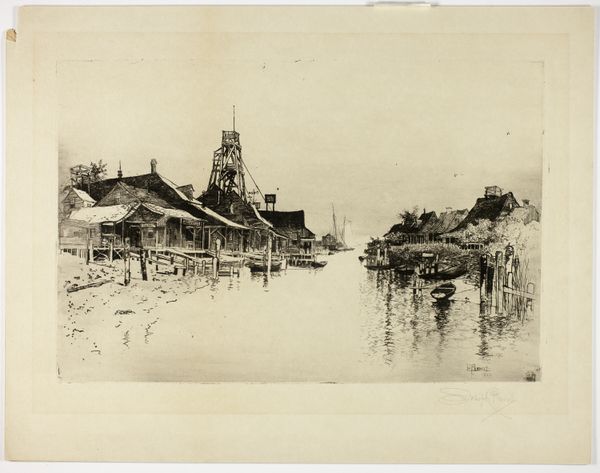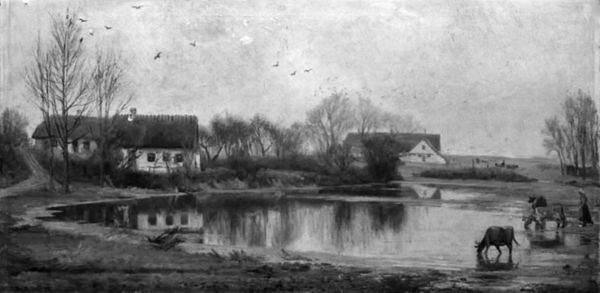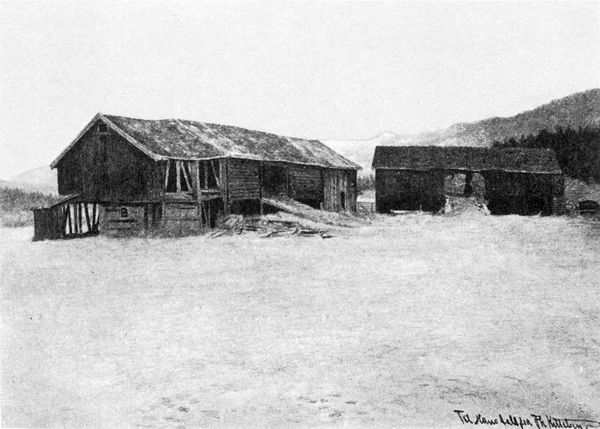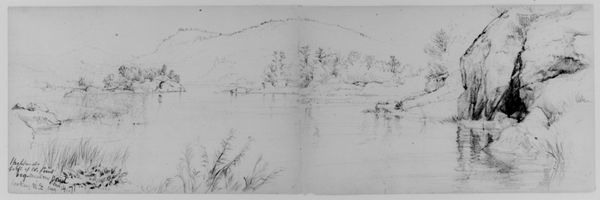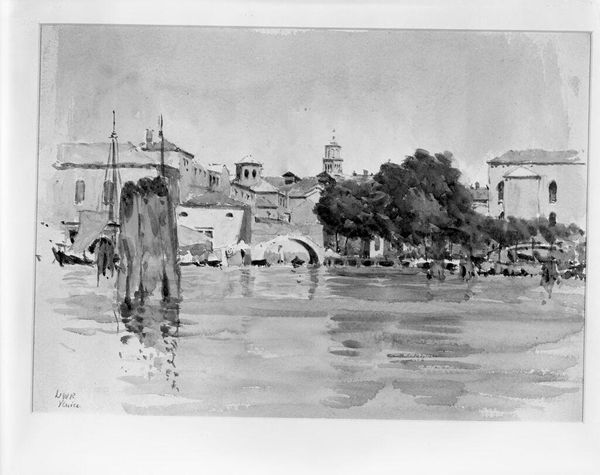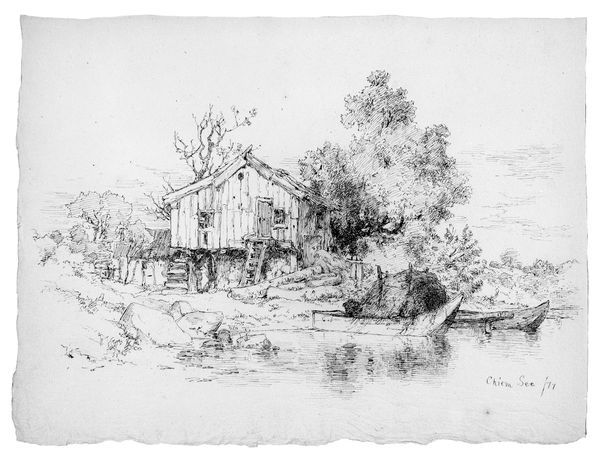
Copyright: Public domain
Editor: This is "High Waters", a pencil and charcoal drawing by Isaac Levitan, from 1885. There’s a somber feeling about this sketch; the flooded landscape and isolated structures speak to vulnerability and resilience, somehow. How do you interpret this work? Curator: It's powerful, isn't it? Levitan often infused his landscapes with social commentary. The flooding here isn't just a natural phenomenon; it reflects the precarity of peasant life in late 19th-century Russia. Land ownership and agricultural policies created a situation where rural communities were incredibly vulnerable to environmental disasters. Notice the small size of the dwellings relative to the expanse of water. What does that spatial relationship suggest to you? Editor: It makes the houses feel very small and insignificant…almost impermanent against this huge, powerful force. Almost like a visual representation of inequality and how powerless some groups are against natural forces that determine their livelihoods. Curator: Exactly. And consider the use of monochrome. Does the limited palette enhance that feeling of bleakness and hardship? The lack of colour flattens the visual hierarchy; we have no distractions from the very direct commentary being offered by this work. Editor: Yes, absolutely. The grayness emphasizes the somber and subdued tones and feelings I got when viewing it initially, and pushes forward the idea of struggle in bleak conditions. Curator: It's a subtle critique. Levitan wasn't overtly political, but his work often hints at the social realities he witnessed. Considering those circumstances adds another layer to the work. Editor: That gives me a lot to think about. It’s more than just a pretty landscape. Curator: Indeed. It shows how art can reveal complex relationships of power and vulnerability. It is amazing how the social and environmental meet.
Comments
No comments
Be the first to comment and join the conversation on the ultimate creative platform.
